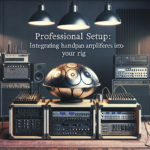<!DOCTYPE html>
<html lang="en">
<head>
<meta charset="UTF-8">
<meta name="viewport" content="width=device-width, initial-scale=1.0">
<title>The Art of Percussive Handpan</title>
<style>
body {
font-family: Arial, sans-serif;
line-height: 1.6;
margin: 20px;
}
h1, h2, h3 {
color: #2c3e50;
}
p {
margin-bottom: 15px;
}
ul {
margin-bottom: 20px;
}
.faq-section {
background-color: #f4f4f4;
padding: 20px;
border-radius: 5px;
}
</style>
</head>
<body>
<h1>The Art of Percussive Handpan: Tips and Techniques for Beginners</h1>
<p>The handpan, a unique and captivating musical instrument, has enchanted musicians and audiences alike with its ethereal soundscapes. Originating from a blend of percussion principles and melodic intonations, the handpan offers a fascinating realm of musical exploration. For beginners eager to dive into the world of handpan playing, understanding its percussive nature is crucial. This article delves into the intricacies of the handpan's percussive techniques, offering tips and guidance for beginners to master this art form.</p>
<h2>Understanding the Handpan</h2>
<p>The handpan is a steel-based instrument crafted to produce harmonious and rich sounds when struck. Its design resembles a convex lens, typically containing several notes within its scale on the top surface. Unlike traditional percussion instruments, the handpan combines melody and rhythm, allowing players to create music with depth and emotion.</p>
<h3>Basic Handpan Structure</h3>
<p>A typical handpan consists of a central note called the Ding, surrounded by various other notes. The positioning and the scale of these notes are meticulously tuned to ensure harmony. As a result, even a simple strike on the handpan can produce a rich, resonant sound that evokes a sense of tranquility.</p>
<h2>Getting Started with Percussive Techniques</h2>
<p>Beginners keen on learning the handpan should first understand the basics of hand placement and striking techniques. Here are essential tips to get you started:</p>
<h3>1. Hand Positioning</h3>
<p>Proper hand positioning is fundamental. Your hands should be relaxed yet controlled, hovering just above the surface of the handpan. This position allows you to strike with precision and fluidity, ensuring that each note resonates clearly and without unwanted vibrations.</p>
<h3>2. Striking Techniques</h3>
<p>There are several basic striking techniques that every beginner should master:</p>
<ul>
<li><strong>Palm Strike:</strong> Use the base of your fingers or the center of your palm to achieve a deeper, bass-like sound. Ideal for striking the Ding or central note.</li>
<li><strong>Finger Strike:</strong> Utilize your fingertips to create sharper, more precise notes. This technique is suitable for playing melodies or faster pieces.</li>
<li><strong>Thumb Strike:</strong> Employ your thumb for a softer, muted tone. Thumb strikes are perfect for nuanced expressions.</li>
</ul>
<h3>3. Damping Techniques</h3>
<p>Damping is a crucial skill for controlling the resonance of your notes. By gently resting your fingers on a struck note, you can mute it, giving you the ability to control duration and create dynamic percussive effects.</p>
<h2>Advanced Percussive Techniques</h2>
<p>Once you've mastered the basics, you can explore advanced techniques to enhance your musical expression:</p>
<h3>1. Slap Technique</h3>
<p>The slap technique involves a quick, forceful strike to produce a distinct, percussive sound. It requires precision and timing, often used to create rhythmic accents.</p>
<h3>2. Tapping and Rolling</h3>
<p>Rapidly tapping your fingers in quick succession or creating a rolling motion across several notes adds a dynamic, rhythmic layer to your performance. This technique requires agility and coordination.</p>
<h3>3. Ghost Notes</h3>
<p>Ghost notes are subtle, quieter notes played in between louder ones. They enhance the rhythm and flow of your music, requiring controlled, soft strikes.</p>
<h2>The Role of Rhythm and Melody</h2>
<p>The art of percussive handpan is about finding the balance between rhythm and melody. As a beginner, it's essential to explore rhythmic patterns, time signatures, and melodic sequences. Practice transitioning between rhythmic and melodic playing to achieve a seamless fusion in your music.</p>
<h3>Exploring Scales and Modes</h3>
<p>Each handpan is tuned to a specific scale or mode, providing a unique set of notes to work with. Familiarize yourself with the scales intrinsic to your instrument. Experiment with different scales and modes to discover the emotional and sonic textures they offer.</p>
<h2>Practice Tips for Beginners</h2>
<p>Consistent practice is key to mastering the handpan. Here are some practice tips for beginners:</p>
<h3>1. Set a Routine</h3>
<p>Dedicate specific times each day to practice. Consistency is essential for developing muscle memory and improving technique.</p>
<h3>2. Slow and Steady</h3>
<p>Start slow. Focus on precision and control rather than speed. Gradually increase your tempo as you become more comfortable with each technique.</p>
<h3>3. Record and Reflect</h3>
<p>Record your practice sessions and listen back. Pay attention to areas that need improvement and adjust your practice routine accordingly.</p>
<h2>Collaborating and Learning from Others</h2>
<p>Engage with the handpan community. Join workshops, attend handpan gatherings, and connect with fellow enthusiasts. Sharing experiences and learning from others can significantly enhance your playing skills and provide new insights.</p>
<p>Additionally, online platforms offer a wealth of resources, tutorials, and communities. Engage in forums, watch instructional videos, and participate in online discussions to expand your knowledge and technique.</p>
<h2>Conclusion</h2>
<p>The handpan is a mesmerizing instrument that offers endless possibilities for musical expression. By mastering the art of percussive techniques, beginners can tap into the instrument's full potential and create music that resonates on a profound level. With patience, practice, and an open mind, every aspiring musician can embark on a rewarding journey with the handpan, discovering new sounds and expanding their musical horizons.</p>
<div class="faq-section">
<h2>Frequently Asked Questions</h2>
<ul>
<li><strong>Q: Do I need musical experience to start playing the handpan?</strong>
<p>A: No prior musical experience is necessary. Many beginners start with no musical background and find that the handpan's intuitive nature makes it accessible to all.</p>
</li>
<li><strong>Q: Can I use drumsticks or mallets on the handpan?</strong>
<p>A: The handpan is traditionally played with hands. Using sticks or mallets can damage the instrument and alter its sound.</p>
</li>
<li><strong>Q: How often should I tune my handpan?</strong>
<p>A: Handpans generally require minimal tuning. However, factors like temperature changes and frequent play can affect tuning. Consult a professional if you notice significant changes in sound quality.</p>
</li>
<li><strong>Q: Is it possible to change the scale of my handpan?</strong>
<p>A: Altering the scale is a challenging process that can affect the instrument's integrity. It's best to purchase a handpan tuned to the scale you prefer.</p>
</li>
<li><strong>Q: How do I maintain my handpan?</strong>
<p>A: Regular cleaning and careful storage are essential. Keep your handpan dry and clean to prevent rust. Use a soft cloth for cleaning and consider using a protective case for transportation.</p>
</li>
</ul>
</div>
</body>
</html>The Art of Percussive Handpan: Tips and Techniques for Beginners

Leave a comment




